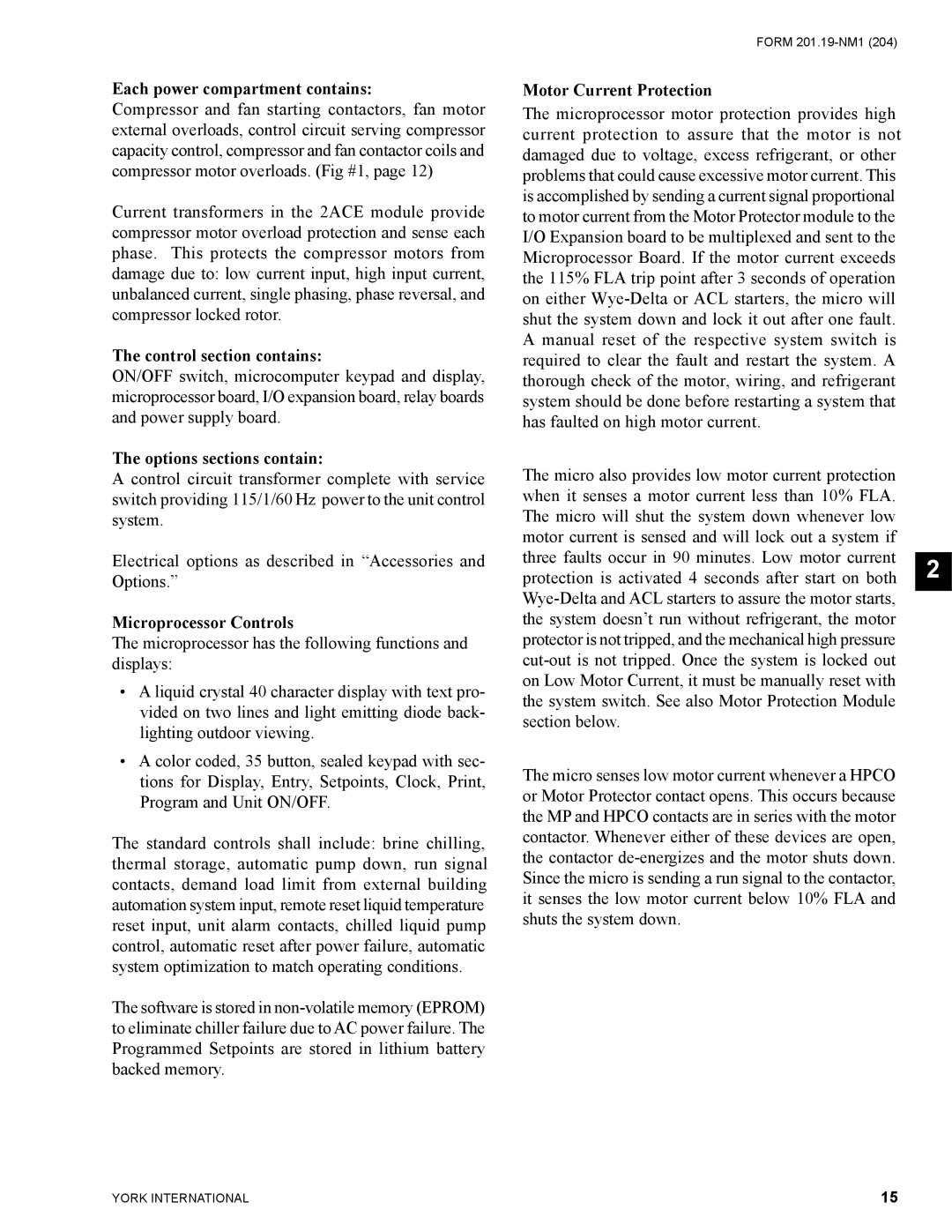Each power compartment contains:
Compressor and fan starting contactors, fan motor external overloads, control circuit serving compressor capacity control, compressor and fan contactor coils and compressor motor overloads. (Fig #1, page 12)
Current transformers in the 2ACE module provide compressor motor overload protection and sense each phase. This protects the compressor motors from damage due to: low current input, high input current, unbalanced current, single phasing, phase reversal, and compressor locked rotor.
The control section contains:
ON/OFF switch, microcomputer keypad and display, microprocessor board, I/O expansion board, relay boards and power supply board.
The options sections contain:
A control circuit transformer complete with service switch providing 115/1/60 Hz power to the unit control system.
Electrical options as described in “Accessories and Options.”
Microprocessor Controls
The microprocessor has the following functions and displays:
•A liquid crystal 40 character display with text pro- vided on two lines and light emitting diode back- lighting outdoor viewing.
•A color coded, 35 button, sealed keypad with sec- tions for Display, Entry, Setpoints, Clock, Print, Program and Unit ON/OFF.
The standard controls shall include: brine chilling, thermal storage, automatic pump down, run signal contacts, demand load limit from external building automation system input, remote reset liquid temperature reset input, unit alarm contacts, chilled liquid pump control, automatic reset after power failure, automatic system optimization to match operating conditions.
The software is stored in
FORM
Motor Current Protection
The microprocessor motor protection provides high current protection to assure that the motor is not damaged due to voltage, excess refrigerant, or other problems that could cause excessive motor current. This is accomplished by sending a current signal proportional to motor current from the Motor Protector module to the I/O Expansion board to be multiplexed and sent to the Microprocessor Board. If the motor current exceeds the 115% FLA trip point after 3 seconds of operation on either
The micro also provides low motor current protection when it senses a motor current less than 10% FLA. The micro will shut the system down whenever low motor current is sensed and will lock out a system if three faults occur in 90 minutes. Low motor current protection is activated 4 seconds after start on both
The micro senses low motor current whenever a HPCO or Motor Protector contact opens. This occurs because the MP and HPCO contacts are in series with the motor contactor. Whenever either of these devices are open, the contactor
2
YORK INTERNATIONAL | 15 |
